The perfect scrambled eggs for your baby or toddler. This is a great protein packed meal for a baby or toddler, made extra appetizing with cheese and nutmeg for those foodie babies who love a little extra flavor. I’ll give you three different cooking methods so you can find the best way to introduce eggs to your baby, whether they are spoon fed, self fed or following baby led weaning.
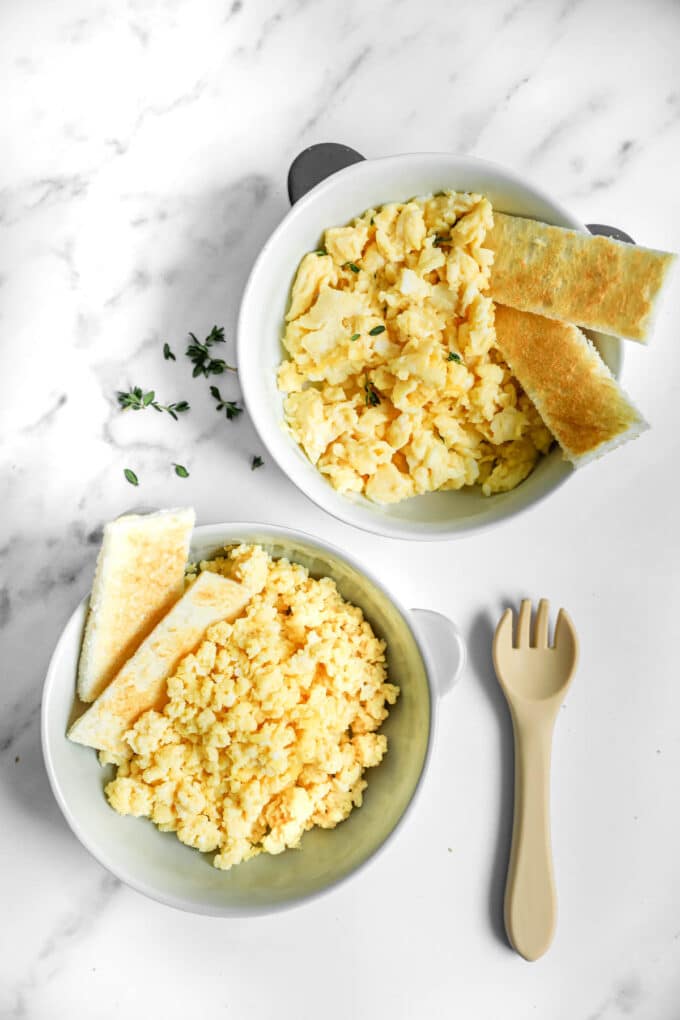
Scrambled eggs are a hit in this house, and one of the few things I can feed both the baby and the preschooler. Fellow parents, you will appreciate what this means to me.
Eggs are an amazingly nutritious food for little people, and vegetarian babies in particular will benefit from the protein and omega-3 content of eggs.
These cheesy nutmeg scrambled eggs are the perfect first taste of eggs for your baby, but so tasty that the whole family can join in. They are that little bit more interesting than plain eggs with the addition of cheese and a few pinches of nutmeg to give a warming, lightly spiced flavor that will delight baby’s taste buds. The addition of cheese and nutmeg are optional though – make them plain if you wish!
How and when to introduce eggs to a baby
You can introduce eggs from six months of age.
Eggs are a potential allergen so check in with a healthcare professional if you have reason to be concerned about allergies; otherwise you can dive right in, and just check for any reactions.
How to prepare scrambled eggs for babies : Three Different Methods
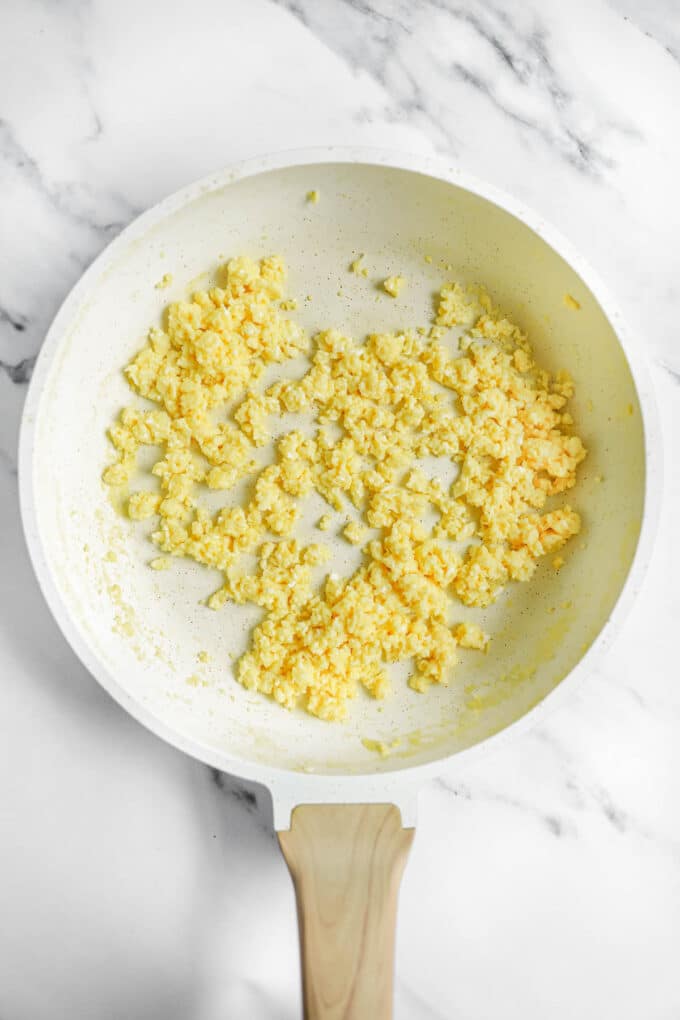
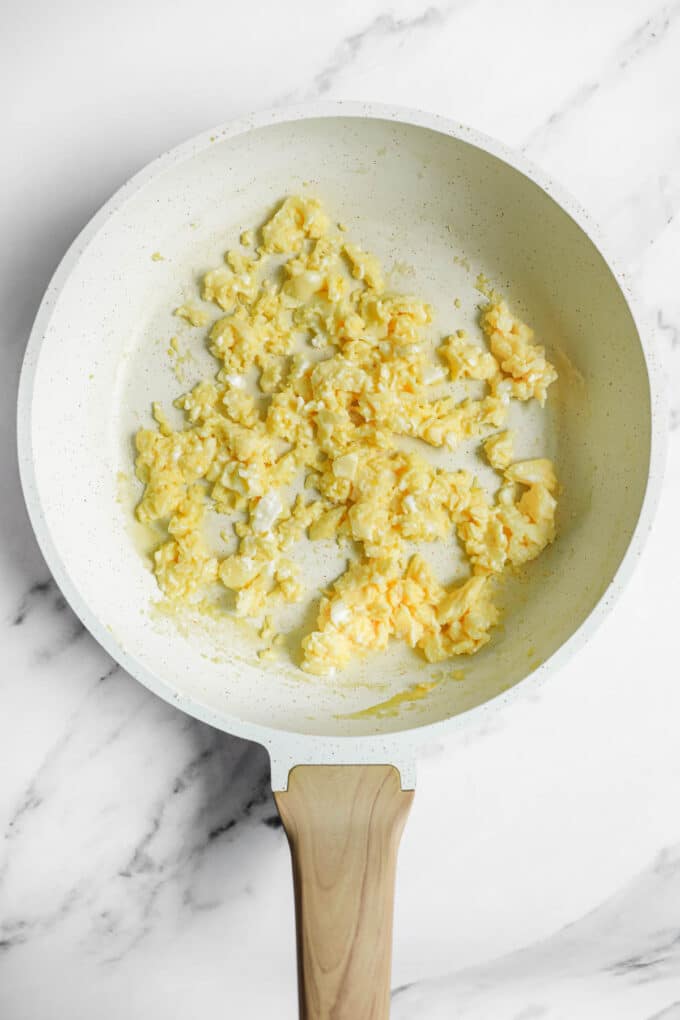
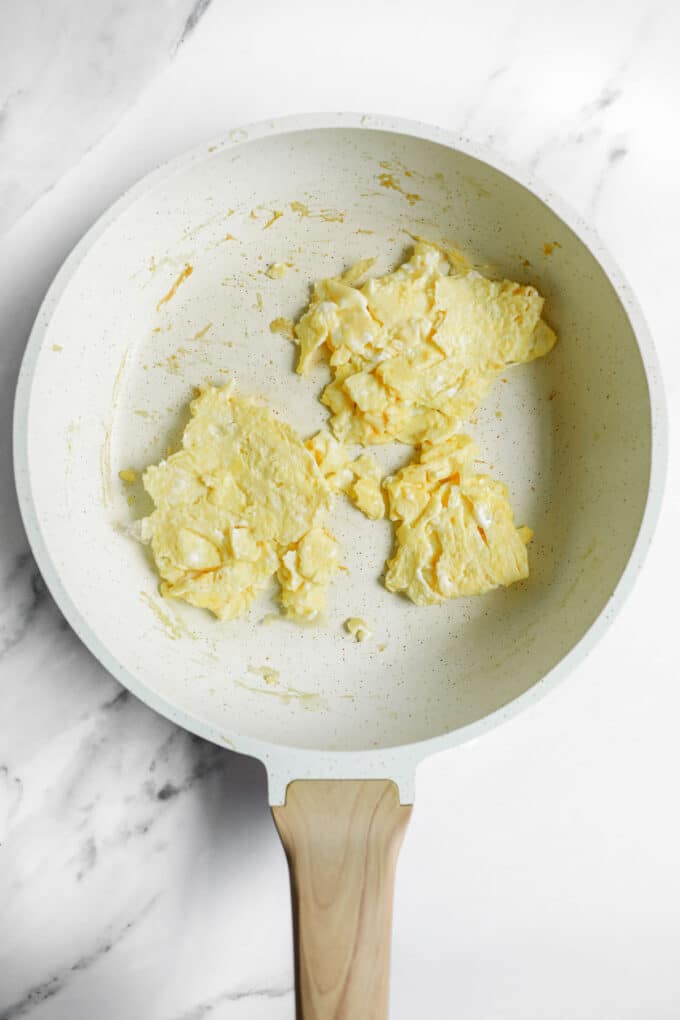
There are several approaches to scrambling your eggs, but my photos and instructions feature these three, which I think suit babies best:
Scrambled eggs for 6-9 month old babies, spoon fed
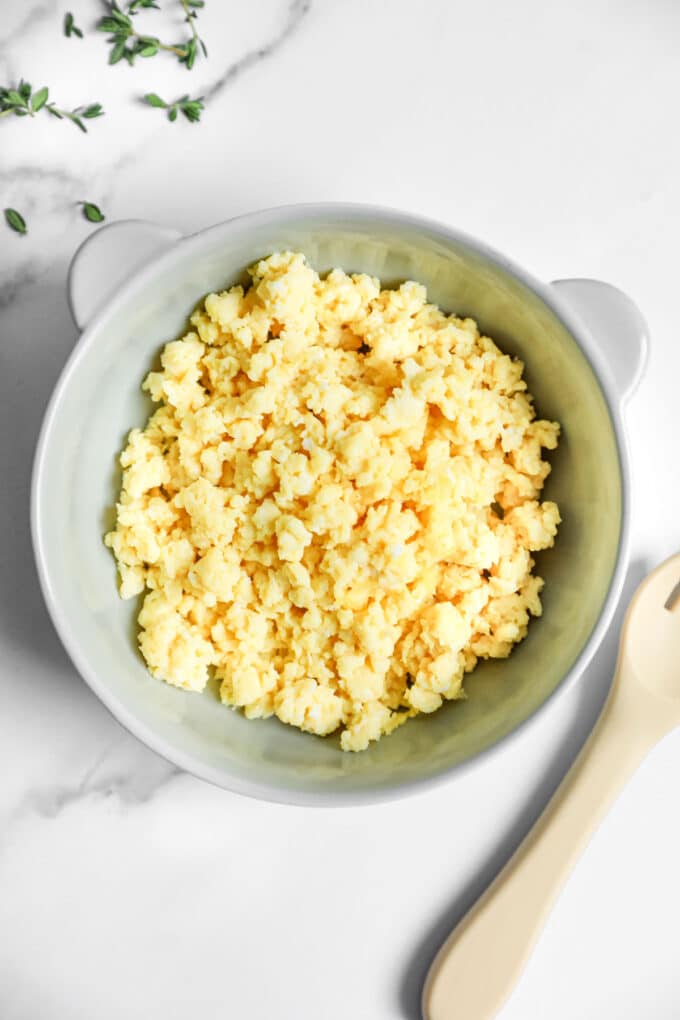
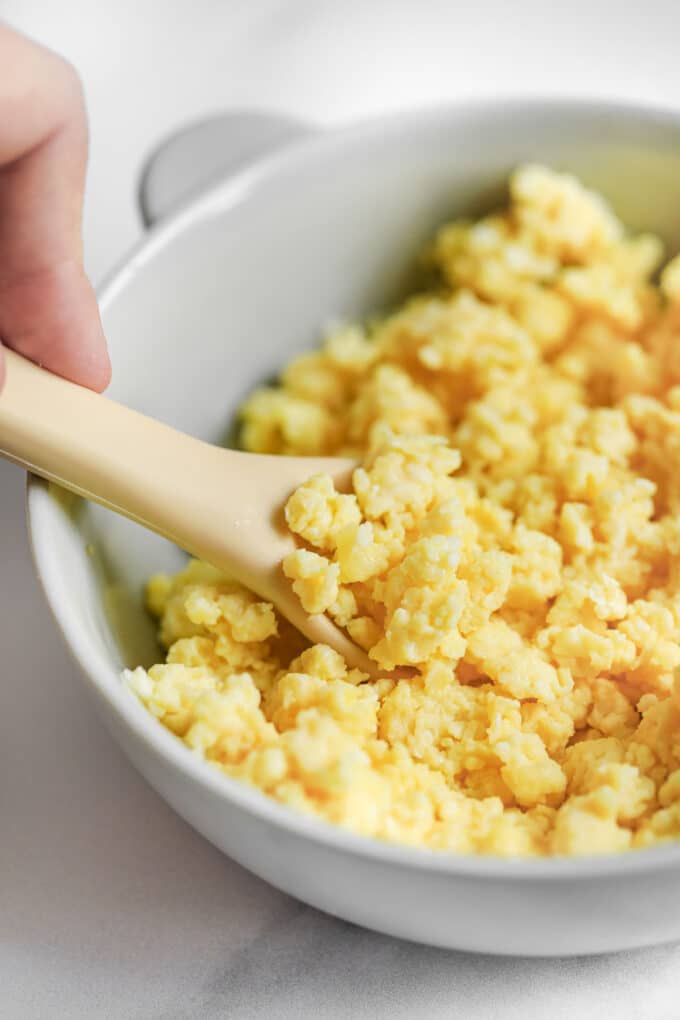
These eggs are whisked throughout the cooking process in the pan so they are soft, fluffy and finely scrambled with no large chunks. These work well for spoon feeding. For older babies who have nailed their pincer grasp, self feeding would be an option here too.
Scrambled eggs for babies 12 months +
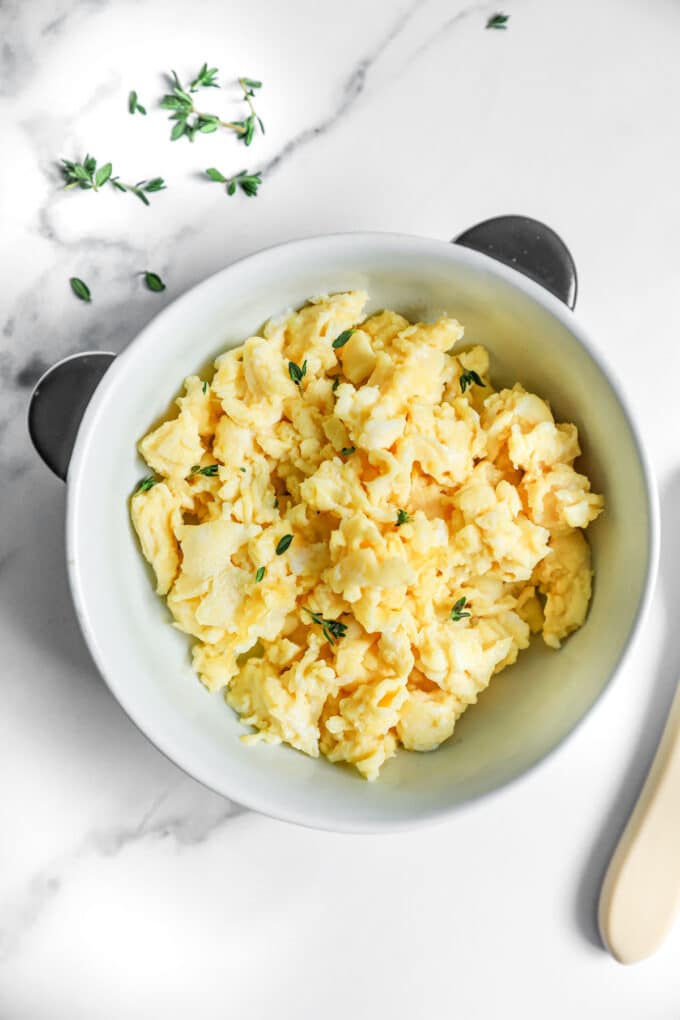
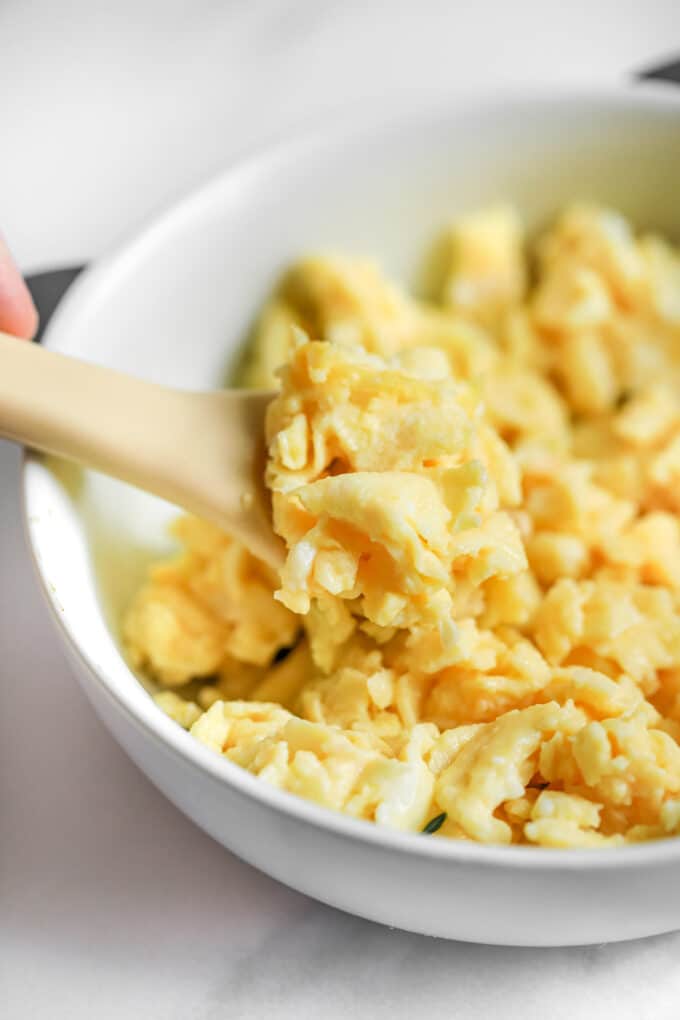
These eggs are cooked by gently folding the mixture with a spatula instead of whisking, which still leaves them fairly chunky with discernible pieces that can be picked up by older babies and toddlers who like to eat with their hands.
You want a confident eater with this preparation. If your baby is younger than 12 months and likes to self feed, you may prefer to stick with the whisking method to make sure the pieces are small enough not to be a choking hazard, or look at Method 3 if they’re confident at handling larger pieces of finger food to gum down on.
Scrambled eggs for baby led weaning
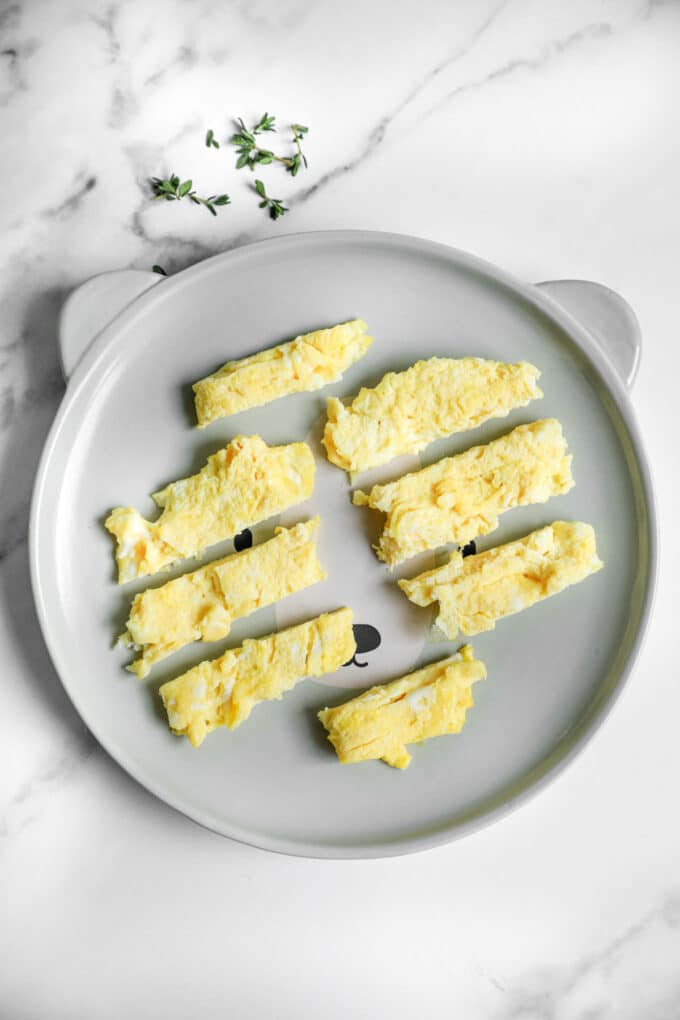
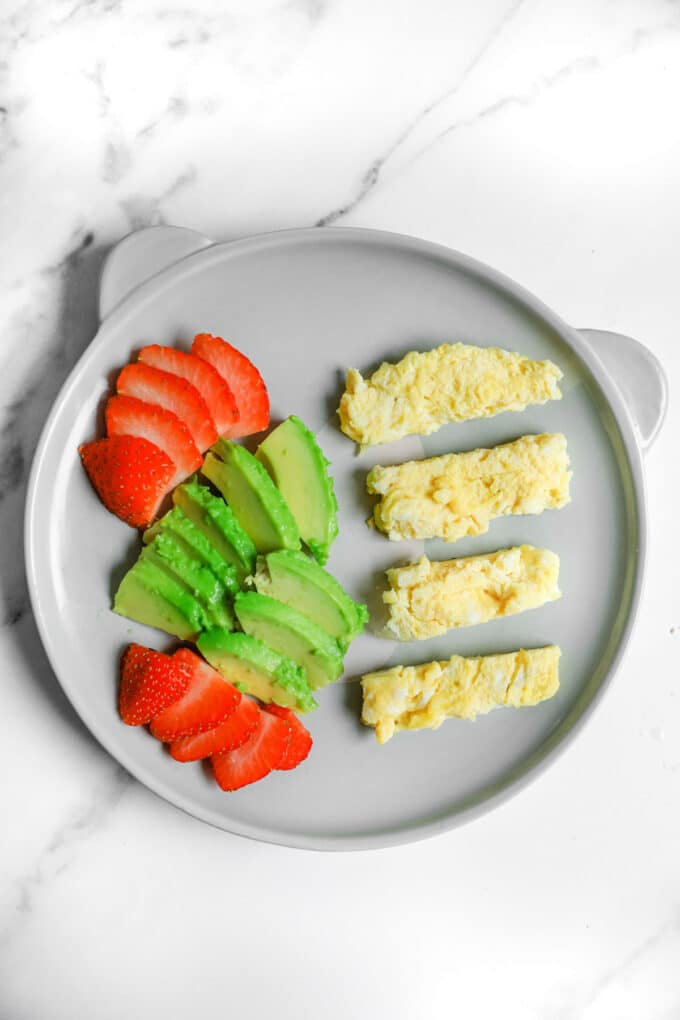
Another great option for eating with hands, these scrambled eggs are cooked into a more homogenous mass and then sliced into strips to make finger food for baby led weaning plates from 6 months + or older toddlers.
They are similar to omelette strips but fluffier and crumblier.
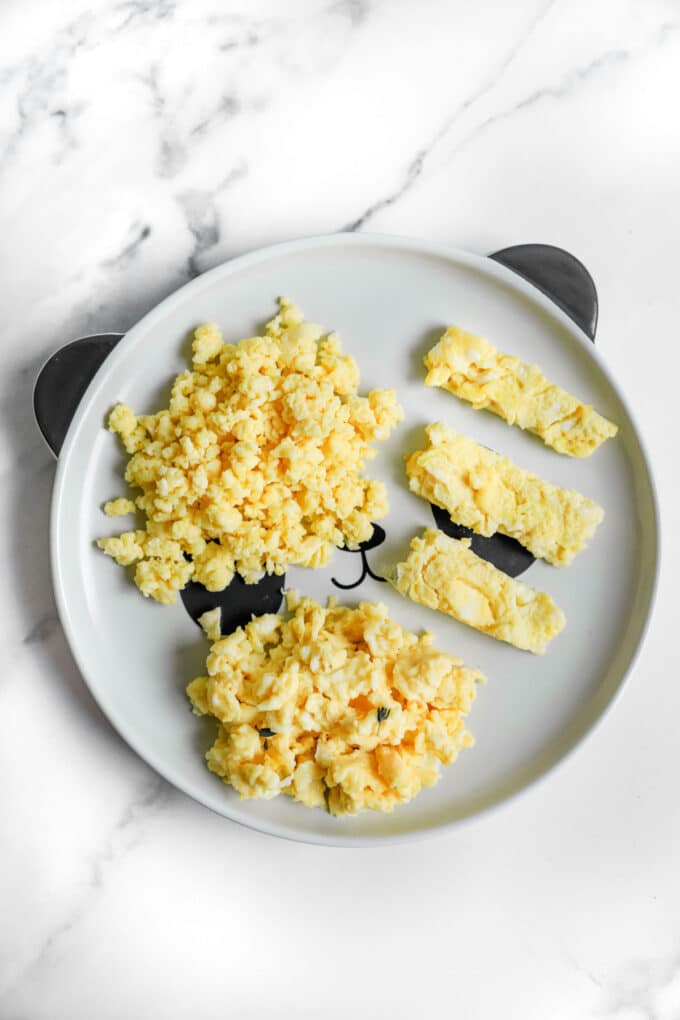
Adding flavor to scrambled eggs
Your baby might love eggs just as they are, or might be more inclined towards cheesy, sweet or spiced flavors, like my two have been. These cheesy nutmeg eggs are a guaranteed hit with the babies who enjoy a bit of something “extra”.
Scrambled eggs are a perfect playground for flavor introductions, so it’s a great thing to try with a baby who has been enjoying plain foods, when you feel it’s worth starting to explore some extra flavors.
My preschooler is not big on trying brand new things, but adding twists to things she already loves seems to work well. She enjoys spices (possibly because we rebranded them as “sprinkles” in our house!) so garam masala, allspice, generic mixed spices and curry powder have all been popular here.
More First Baby Meal Recipes
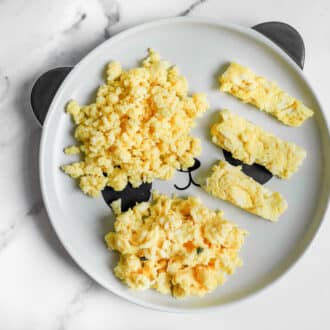
Tasty Scrambled Eggs for Babies (3 Ways)
Ingredients
- 1 egg
- 1 tsp whole milk
- 1 Tbsp grated cheese, see notes
- A few pinches of nutmeg, optional
Instructions
- Whisk all ingredients in a bowl.
- Grease a small frying pan with a little butter. Heat to a low-medium heat.
- Method 1: Pour the egg mixture into the pan and use a silicone whisk to constantly mix and whisk the eggs as they cook for a fluffy, soft finish with lots of small distinct pieces.
- Method 2: Pour the egg mixture into the pan and allow the eggs to sit for around 15 seconds, then use a spatula to very gently stir and fold the eggs, while allowing them to break into larger distinct pieces, repeating a few times until they're cooked.
- Method 3: Pour the egg mixture into the pan and allow the eggs to sit for around 15 seconds, then use a spatula to very slowly and gently move them around the pan and fold them on top of themselves to create a few larger masses of eggs. Aim for a square or rectangle shape but it can be very loose! Remove from the pan and slice into strips.

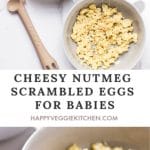
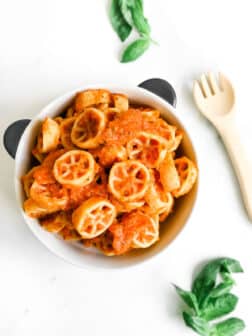
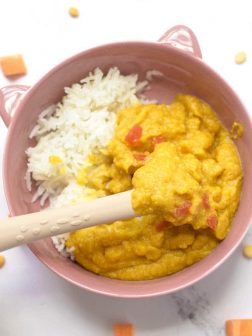
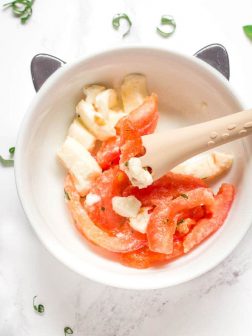
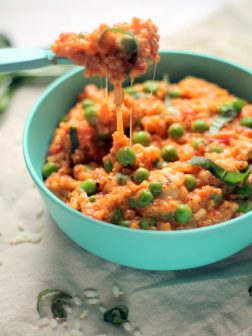

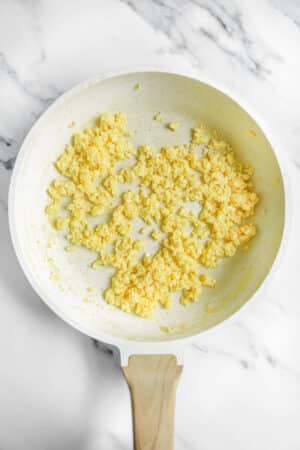
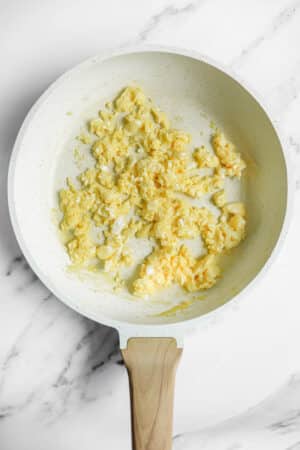
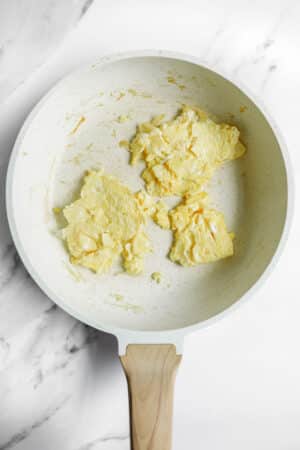
Perfect!! I was giving my boy one hardboiled egg with avocado for the past few months, and he ended up getting tired of it lol. It was time for something new. This was devoured very happily by my 18 month old picky eater. Thanks for the recipe! 🙂